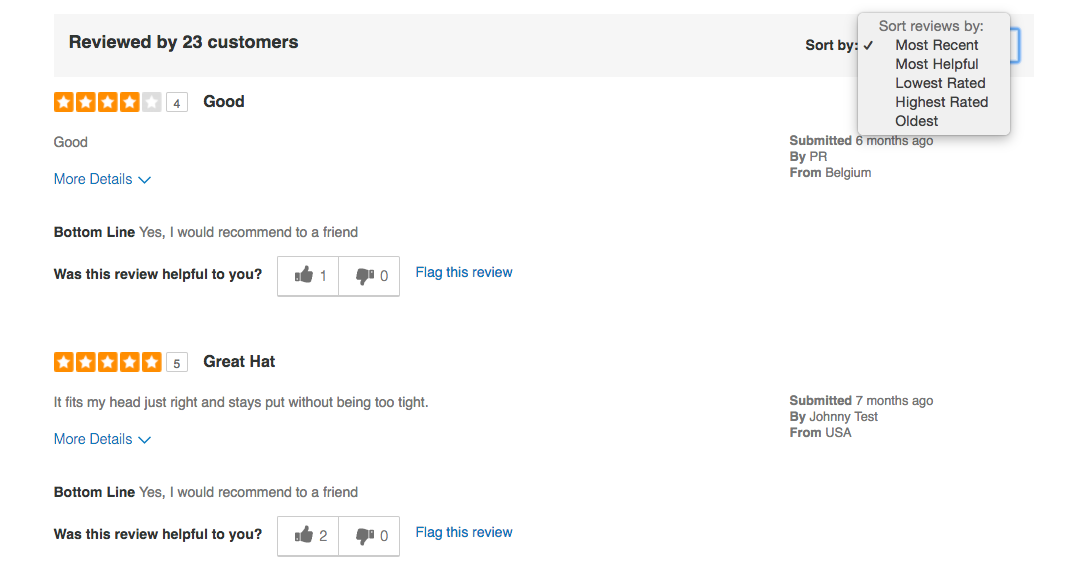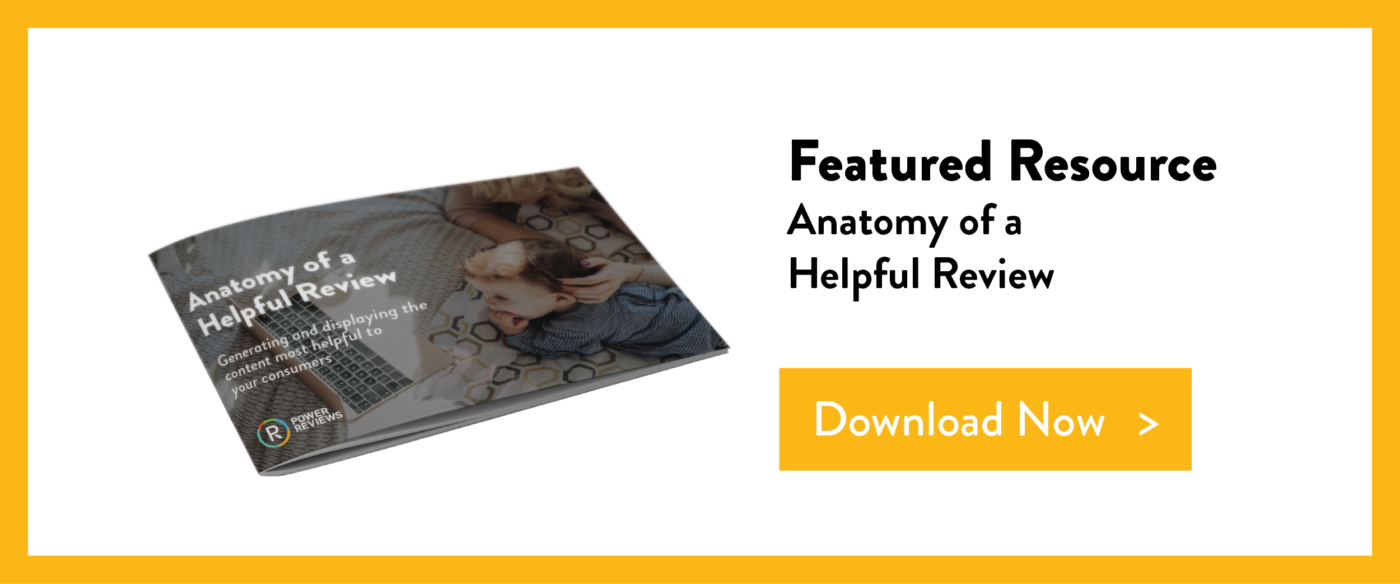There’s no longer any doubt that reviews are a helpful tool for consumers. 95% of consumers consult customer reviews and 86% consider them an essential resource when making a purchase decision.
But here’s the thing — when it comes to helpfulness, not all reviews are created equal. While one review may be full of detailed insights to help a customer make a smart purchase decision, another may provide no insight at all.
Let’s say you’re an expectant mother shopping for a rocking chair for your baby’s nursery. There are two reviews for one model you’re considering. The first review is full of details and even includes a photo of the chair in a nursery, to give you a better idea of what it looks like “in the wild.”
“I live in a small condo in Chicago and searched forever for a rocking chair that would work for my son’s small nursery. This one was exactly what I was looking for. It’s high quality and sturdy and has a high back to accommodate my tall husband. As an added bonus, the chair is very stylish so once we no longer need it in the nursery, we’ll move it out to the living room.”
This review helped you determine that you want to add this rocking chair to your shortlist, so you give it a “helpful” vote.
The next review is also five stars, but provides short, vague feedback, with no visual content.
“Great chair.”
Since this review didn’t provide very much insight, you give it an “unhelpful” vote.
What Makes a Review Helpful
So what makes one review more helpful than another? Recently, we analyzed 7.8 million reviews from the past year in the PowerReviews Open Network to identify common characteristics of reviews that have been voted by consumers as helpful. Here are four of our key findings:
1. Longer is Better: The longer the character count of a review, the greater its average number of helpful votes. This makes sense, since longer reviews likely provide more details, as illustrated in my example above.
2. Visual Media Matters: Reviews with helpful votes have a 16% higher volume of videos and a 13.8% higher volume of photos than those without. This comes as no surprise, since previous PowerReviews research found that 88% of consumers look for visual content (think photos and videos) submitted by other consumers prior to making a purchase.
3. Product Price Makes a Difference: Reviews with helpful votes tend to be on higher priced items, most likely because shoppers are spending more time consuming reviews for expensive products and taking the time to indicate a review’s helpfulness.
4. One-Star Reviews Pull in the Most Helpful Votes: One-star reviews, on average, generate more “helpful” votes than any other star rating. In addition to adding a layer of authenticity to your review content, negative reviews steer consumers away from a product that doesn’t meet their needs, and steer them toward products that do.
Six Tips for Collecting and Displaying the Review Content Most Helpful to Your Shoppers
Reviews are a key tool for helping consumers make smart purchase decisions. But, as our analysis found, not all reviews are created equal. Here are six recommendations for generating and displaying more of the review content that’s most helpful to your consumers.
1. Identify Your Most Helpful Reviewers
Analyze your review content to identify contributors of helpful content. For example, look at the number of reviews your consumers have written, as well as the components of those reviews — including helpful votes, visual content and length.
2. Reward Reviewers for Optimal Content
Once you’ve identified your helpful reviewers, ask them to contribute additional content. Consider tying review generation to your existing loyalty program and awarding points to reviewers whose content meets certain criteria. For example, give points to reviewers that write reviews that are a certain number of characters long or include a photo or a video. Then, when the consumer accrues a certain number of points, he can redeem the points for a reward such as free shipping or a percentage off a future purchase.
3. Focus on High Priced Items
We know from previous research with Northwestern University that reviews are more impactful for items that are higher priced in their category — for example, an organic cereal that is more expensive than a non-organic variety. And our most recent analysis found that reviews with helpful votes tend to be on higher priced items, likely because consumers are spending more time reading reviews for items that cost more.
Identify higher priced items in your product catalog, and prioritize generating reviews for these products. There are many ways to do this, but the most impactful way is to send a post purchase email to shoppers, asking them to contribute reviews for products they’ve recently purchased. In fact, we’ve found that more than 60% of reviews are written as the result of a post purchase email.
4. Allow Consumers to Sort By Review Helpfulness
Most likely, your website allows visitors to sort reviews for a given product by a number of different factors, such as star rating (highest rated vs lowest rating) and recency (most recent vs oldest). Be sure you’re also allowing consumers to sort reviews by helpfulness. This allows shoppers to easily identify the content that has been most helpful to others like them.

5. Prominently Feature Helpful Reviews
Once you’ve generated plenty of reviews, make it easy for shoppers to find the most helpful review content for each of your products. Ask your ratings and reviews provider if they offer a review “faceoff” that provides consumers with an at-a-glance summary of the most helpful positive and negative reviews. This faceoff will help your shoppers more quickly determine if a product is right for their needs.

6. Embrace Negative Reviews
Our analysis also found that one-star reviews, on average, generate more “helpful” votes than any other star rating. And though you certainly don’t want to aim for negative reviews, this content is a helpful tool that allows consumers to identify products that best fit their needs. In fact, 82% of consumers seek out negative reviews. And 44% of Centennial shoppers (age 13-18) don’t trust a product’s reviews if there’s no negative feedback present.
In addition to helping shoppers make smart purchase decisions, allowing negative reviews to be posted on your website provides a level of authenticity to your content, which helps you build trust with your shoppers. Plus, negative reviews allow you to identify insights to improve future iterations of your products in order to better serve your customers.
Want to find out what else we learned about helpful reviews? Download our latest report: Anatomy of a Helpful Review.






